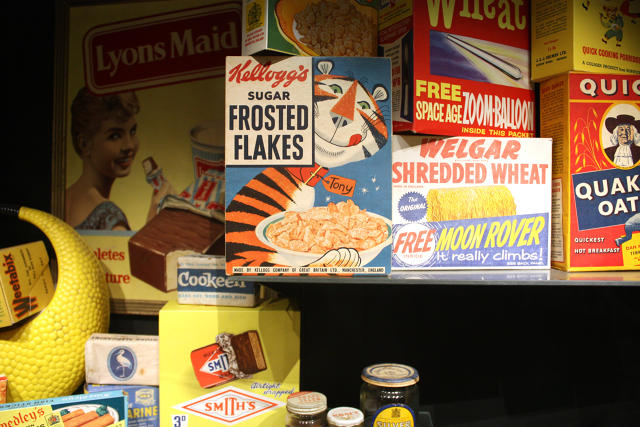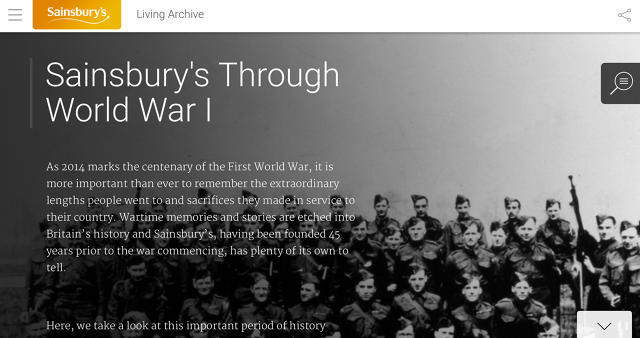Why brands must Mine Their Archives
within the digital age, consideration spans are brief but collective reminiscences are long. this is the storytelling opportunity brands are missing.
June 29, 2015
In London’s Notting Hill, one man’s love of manufacturers has grown into something of an obsession. Over 30 years, curator Robert Opie has accrued the chocolate bars, cereal packets, and washing powders of yesteryear, using them to build a public assortment: the Museum of brands, Packaging and promotion. The artifacts will not be treasured, but they type a the most important part of the nation’s culture—a shared heritage that goes past individual reminiscence.
but the objects in Opie’s assortment require some clarification so as to hold meaning. On their very own, they fail to capture what makes a brand, because, for those who in reality boil it down, manufacturers most effective exist in our minds. they’re, in David Ogilvy’s phrases, “the intangible sum of a product’s attributes”—a mixture of purpose reality, emotion, and association, constructed in the memory.

which you can break up brand reminiscence two ways: we have individual associations, implicit to us on my own, after which collective ones that type a part of our shared culture. Collective brand reminiscence permits us to have an experience as a bunch in ways we are able to’t as folks, and that makes it more highly effective. certainly, collective associations can have this kind of large affect that they alter us as a society. bring to mind the connective power of fb, Google, Uber.
the ability of memory
but when brands are constructed of memories, why aren’t corporations spending more money and time curating their history online?
In a digital age, the web is apparent place to try this, yet many companies are failing to regulate their own digital heritage. the money spent organising their manufacturers over the years is being wasted, because the curation of their history is just being left to fb, Wikipedia, and Google’s search algorithm. It’s a massive oversight and lost opportunity.
firm and market disruption is now all over the place and inflicting situation in boardrooms as firms attempt to evolve. As already based manufacturers, long-standing firms have a huge aggressive advantage: their heritage and the emblem memory they’ve cultivated over time.
The history we’ve with a brand shapes our views of it for the lengthy-time period. If a model is associated with certain reminiscences, it’s extra ready to diversify into new sectors. A purchaser will belief it to provide the service they’ve come to predict, just in a new category.
So what can manufacturers do?
companies wish to curate their historical past in a fascinating, inter-related manner that permits people to get right of entry to visible tales and memories, informed through the folks that shaped and built them. this would have three results: building a digital presence that educates people internally in regards to the company and shows externally its relevance in lately’s world; maintaining the corporate historical past and curate it for the long run; taking into consideration mass schooling about a model thru ubiquitous get entry to, invoking a collective memory.
Whereas just 20 or 30 years in the past, these stories may stay limited to a ebook or on-web page exhibition, or worse, buried in file packing containers, the digital age within the form of the web bargains the best option to each tap into collective model memories and likewise preserve historical past. listed here are three sensible steps for sharing memory.
1. Digitize an available archive
every company with heritage has an archive of content that needs to be digitized and made accessible. The content—pages could quantity into the loads of hundreds— must be structured and made simple for somebody to navigate.

brands can research from the example of publishers, who have led the charge in designing effective digital archives. the new York times is a superb instance. instead of leaving back considerations to grow mud, the paper unlocked the value of its previous content material with the times machine, which resurfaces ancient interviews and lines to give context to present news tales, boost reader dwell time and cultivate a robust model story as an extended-established “newspaper of record.”
2. Design an interface that permits customers to find content material
The design of the interface will have to allow users to find content simply and intuitively, and supply an emotional hook that encourages people to delve deeper. the most the most important aspect in the introduction of a digital archive is its visual and interactive design; it will have to look wonderful and work superbly on all devices. Analyze the user data to take into account habits and then form and evolve the person expertise accordingly.

This requires good programming, so archive subject material can be resurfaced in response to a person’s habits. Virgin.com is an instance of a site that does this. the usage of a section of know-how referred to as “The Kinetic Engine,” the website determines the kind of content material customers are consuming and recommends relevant content material in response. This offers a extra immersive, meaningful, and interesting model experience.
three. Create a searchable visualization of the corporate
In essence, brands can be making a digital document encompassing their entire history and culture. the most straightforward manner to do that is to create “exhibits” that permit customers the chance to explore explicit time-sessions or situations that might be related to them.
.

The British supermarket Sainsbury’s is a superb instance of a brand that has accomplished this. Its “living archive” is like a digital museum, the usage of ancient collections to showcase the corporate’s lengthy-standing values and cultural heritage. subject matter is displayed through interactive stories, grouped around issues such as World warfare I and Christmas prior and existing.
The advancement in digital know-how and placement-primarily based products and services over the last decade has given us the ability to preserve tradition and historical past in an unprecedented manner, so that it can be accessed by way of anyone at any time. it may be rudimentary browsing on a homepage, shifting to extra advanced thematic discovery. Tying into maps, it may be contextual discovery on-web page at a specific place, creating delightfully shocking moments. it is via journeys like these that new memories are cast and, possibly, shared.
[Top Photo: Ken Reid/Getty Images]
(143)














